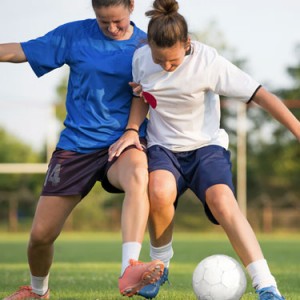Doctors’ Notes
BackSoccer Health & Safety
GOOOOOOOAL!!!
 That’s a familiar sound this time of year throughout the world, and also here in the Pittsburgh area. As the weather warms up, the shin guards go on and the soccer nets go up. Soccer is the most popular team sport in the world and one of the most rapidly growing team sports in the United States. The fast growth of soccer in the United States — it’s already the most popular team sport in the rest of the world — is due in some part to the accessibility of the game, as well as that soccer has a lower injury rate than many other popular sports
That’s a familiar sound this time of year throughout the world, and also here in the Pittsburgh area. As the weather warms up, the shin guards go on and the soccer nets go up. Soccer is the most popular team sport in the world and one of the most rapidly growing team sports in the United States. The fast growth of soccer in the United States — it’s already the most popular team sport in the rest of the world — is due in some part to the accessibility of the game, as well as that soccer has a lower injury rate than many other popular sports
Although soccer may appear to be a “safer choice” than most other sports, there still are many inherent risks associated with the sport. Injury statistics for high school boy’s soccer are generally lower than those for football, basketball and wrestling, while girl’s high school soccer has up to twice the injury rate compared to boys. In some instances, soccer has the highest injury rate of all girls’ varsity sports. The rate of injury increases 150% from practices to games, and injuries are 6 times more likely to occur while playing indoor soccer vs. outdoor soccer.
Acute soccer injuries range from muscle strains to ankle and knee sprains to concussions. Two common overuse injuries associated with soccer are Sever’s Disease (heel pain) and Osgood Schlatter’s Disease (knee pain).
Here are some simple steps to help reduce soccer injuries:
Proper Preseason Evaluation
While no injury is completely preventable, a through preseason evaluation can help determine possible areas of concern and also review some preventative measures to help reduce the probability of injury.
Wear Well-Fitting Cleats & Shin Guards
Evidence shows that molded and multi-studded cleats are safer than screws in varieties.
Use an Age-Appropriate-Size Synthetic Ball
Leather soccer balls can become waterlogged and heavy increasing risks for injuries with heading.
Maintain Proper Fitness Levels & Allow Periods of Rest
The old adage “more is always better” does not always hold true. After periods of long inactivity, slowly pace the return back into sport. During the season, listen to your body and modify activity levels if feeling tired and fatigued.
Beware of Your Surroundings
When playing on a field in poor condition, injury rates increase. Mobile soccer goals could potentially fall and injure players; try and request fixed goals if possible.
Drink Up
Heat illness and dehydration are important concerns during summer months. As the mercury goes up so does your body’s need for water. Younger children lack the glands and ability to sweat like adults. Younger athletes generate more heat for their body weight than adults and take longer to acclimatize to warm weather.
Although soccer is not considered a high-impact sport, there’s still plenty of contact involved. The risk of concussion is high in soccer, especially as who plays soccer should have a baseline ImPACT test completed prior to the start of the season. (We offer them at Kids Plus.)
Just know that not all pains are created equal, and if your son/daughter is having pain while playing soccer, you should make an appointment to have the pain evaluated.
If we all follow these tips, we can do our best to work together as a team, so that active kids can stay active!
Travis Lewis, a Kids Plus provider, is a certified Athletic Trainer and a certified Physician Assistant.